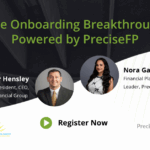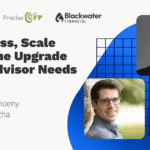What do your clients really want from their portfolio? Are they focused on growth, concerned about downside protection, or hoping for consistent income? Have they expressed a preference for certain asset classes or allocation strategies? Do you know how comfortable they are with risk — or how that comfort level has changed over time? What’s their preferred method of communication — compliant texts, scheduled Zooms, or old-fashioned phone calls? Are you checking in regularly or just at review time? The more you ask, the more clarity you gain — and that insight is key to building a portfolio that truly serves them.
A recent client survey found investors had fired a previous advisor because:
- 32% were unhappy with the quality of financial advice and services.
- 21% were unhappy with the quality of their relationship with their advisor.
- 11% were unhappy with their returns.
How can advisors maximize client returns and, at the same time, improve the quality of services and relationships? Let’s dive into three strategies financial advisors can implement.
1. Uncover Their Risk Tolerance and Investment Preferences
The first way to maximize your client-advisor relationship (and their portfolio) is to sit down and listen to your client’s financial goals. You’ll want to assess things like your client’s risk tolerance levels, current cash position, and where their investment portfolio currently stands. Here are some questions to get you started:
- What are your financial objectives? Do you have any short- or long-term financial needs, such as saving for retirement, education, or big purchases like buying a home?
- What is your investment time horizon? How quickly do you expect returns? What would success look like to you?
- What is your risk tolerance level? How aggressive have your investments been in the past? What is your preferred investment style and mix?
Diving into these questions when you bring on a new client and regularly with existing clients can help set you up for success when it comes to structuring (or restructuring) your client’s investment portfolio. As times change, your client’s investment strategies and preferences may change. By building trust through listening, you can set a solid foundation to work on over the years, even when portfolio returns or market conditions may not be ideal.
2. Diversify Their Portfolio
Next, maximizing your client’s portfolio and returns comes down to effective and intentional diversification. Now that you know your client’s goals and investment preferences, you can create a diversified mix that is right for the objectives you both want their portfolio to achieve. The goal behind diversifying is to ensure no single asset class has an undue influence on overall performance (positive or negative).
You can start by looking deeper into diversifying client portfolios across:
- Asset class (treasuries, equities, bonds, commodities, and alternatives)
- Industries
- Geographic regions
- Investment style
After their portfolio is diversified, it’s key to continuously monitor and rebalance your client’s investment mix to manage risk exposure, adjust to changing market conditions, and maintain integrity with their investment goals. Doing this builds client confidence in your ability to manage and maintain their portfolio performance.
3. Stay Informed and Keep Your Clients Informed
Perhaps the most crucial aspect of maximizing client portfolios (and their trust) is to make sure you take on the role of a trusted advisor in their eyes. What does that mean? Proving through frequent communication that you are well-researched on strategy, informed on current events, and are proactively monitoring their portfolio to ensure maximum returns. In other words, becoming a thought leader for your clients.
How to become a financial advisor thought leader:
- Stay informed: Make sure you’re staying on top of market trends, economic indicators, and regulatory changes that may impact your client’s returns.
- Be flexible: As market conditions change, adjust your strategy accordingly (here’s where your diversified portfolio comes in).
- Be transparent: Most important of all, educate and communicate with your clients often. You could regularly share updates on portfolio performance, market developments, and recommendations on investment strategy.
Becoming a thought leader for your clients builds trust in your ability to successfully execute for their portfolio. And proactive communication will help them feel more secure in your capabilities, even during a downturn.
Want to take your portfolio conversations to the next level? PreciseFP makes it easy. With your subscription, you get access to a built-in risk tolerance questionnaire — ready to use. As a best practice, consider sending the questionnaire to each spouse individually to better understand their comfort levels without outside influence. You can also make it part of your annual check-in to track how attitudes toward risk evolve over time. Even better? You can automatically pull their risk score into an Investment Policy Statement (IPS) for a clear, compliant, and client-friendly summary. Ready to put these ideas into action? Try PreciseFP free and see how it can help you deliver more personalized, proactive advice — starting today.









